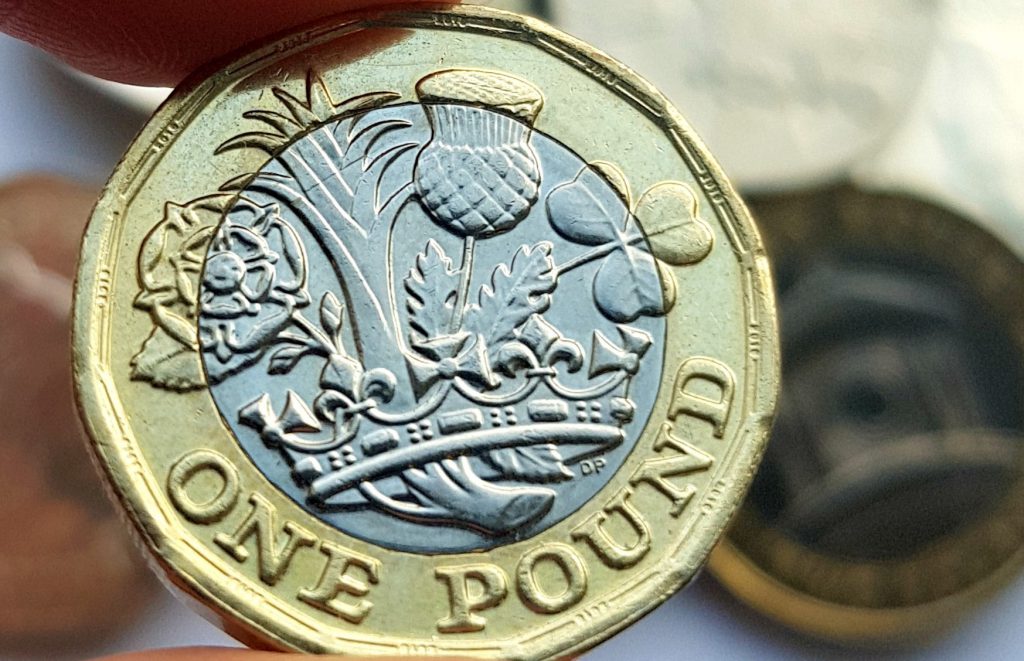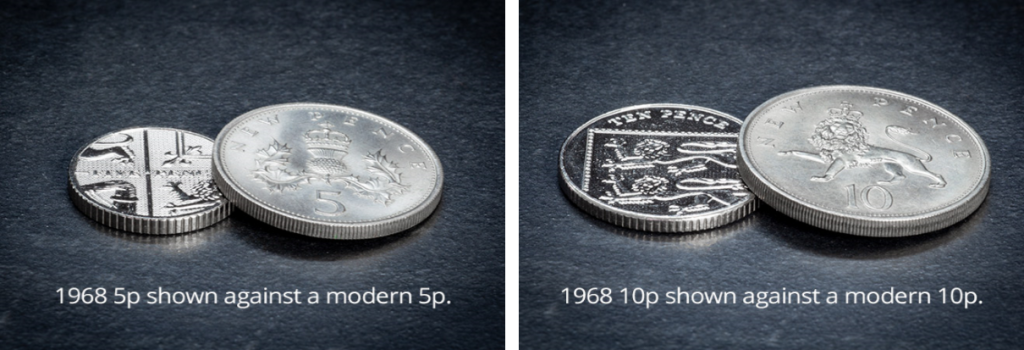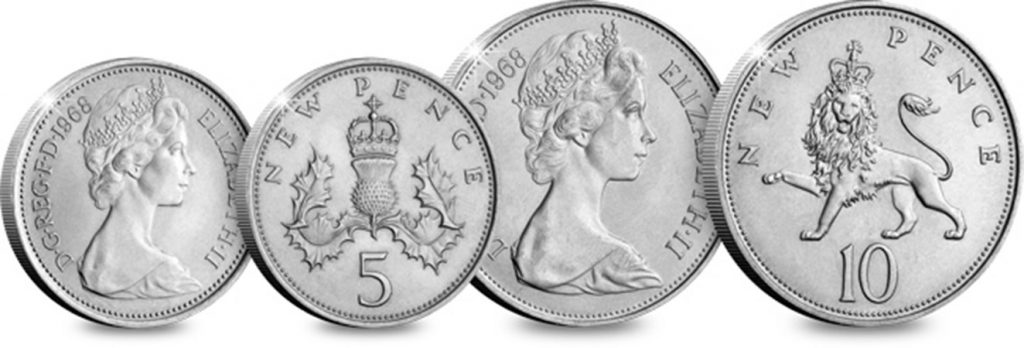Coin News
Now’s the time to start your 12 sided £1 coin collection…
It’s been confirmed that 2018 dated £1 coins have now been released into circulation and Change Checkers are eagerly waiting for them to turn up in their change.
As of yet, the number of 2018 £1 coins in circulation is unknown and so we expect collectors to be keeping a close look out for these coins so that they can add them to their one pound collection!
The round pounds were a part of our lives for 33 years but on the 15th October 2017, the coins were withdrawn from circulation forever. Just before their withdrawal, collectors joined the biggest race of its kind ever held – The Great One Pound Coin Race.
In an effort to complete their collections, change checkers were searching old coat pockets, smashing piggy banks and checking down the back of the sofa to see if they could be the lucky owner of some of the rarest coins – including the Scotland Edinburgh City £1, which tops our £1 Scarcity Index.
12 sided £1 collection
Now that the 2018 dated 12 sided £1 coin has entered circulation, we think that it’s the perfect time to start building up your collection of 12 sided £1 coins to be sure that you don’t miss any from your collection.
The Nations of the Crown £1 design was chosen from a public competition, with the winning artwork being created by 15-year-old David Pearce featuring a rose, leek, thistle and shamrock bound by a crown. Although we do expect future commemorative designs on £1 coins, for now the coins issued only feature the definitive ‘nations of the crown’ design.
We know that of the 1.5 billion 12 sided £1 coins struck to replace the old round pound in 2017, roughly half a billion were dated 2016 and collectors will be keen to secure themselves a 2016 dated £1 coin to start their collection, which can now also include 2017 and 2018 dated coins.

What about the errors?
When these coins were first released, there were many stories from people claiming that they had found an error coin worth thousands. In reality, with such a high number of £1 coins being minted in 2017, there were bound to be variations in the design and quality of striking which you can find out about here.
However, the confirmed dual dated £1 error coin would certainly be one to look out for, with one such coin being valued at £3,000!

The Dual-Dated £1 feature the dates 2016 on the obverse and 2017 on the reverse
Have you been one of the first few to find a 2018 dated £1 coin in your change and will you be holding onto it for your 12 sided £1 coin collection? Let us know in the comments below and don’t forget to keep checking your change to see if you can spot the new 2018 pound.
If you’re interested in coin collecting, our Change Checker web app is completely free to use and allows users to:
– Find and identify the coins in their pocket
– Collect and track the coins they have
– Swap their spare coins with other Change Checkers

Sign up today at: www.changechecker.org/app
Confirmed: Brexit 50p will be issued in 2019
*** UPDATE 12/08/2019 ***
The Chancellor Sajid Javid has asked officials if it will be possible to produce Brexit 50p coins in time for Britain’s departure from the EU in October 2019.
Previously, Chancellor Philip Hammond planned for just 10,000 commemorative Brexit coins to be struck for the event, however Javid intends millions of Brexit 50ps to be produced for circulation.
As mentioned in the blog below, the coin will have the words, “Peace, Prosperity and Friendship with all nations” and feature the date of Brexit – now 31st October 2019.
But with only a few months to go, will the coins be signed off by the Queen’s privy council and struck by The Royal Mint in time for Brexit?
Click here to sign up for the latest Brexit 50p updates.
It’s official! A Brexit 50p WILL be issued by The Royal Mint to mark the UK’s exit from the EU!
Within his budget, the Chancellor unveiled his advanced plans for the 50p coin, which will be released in Spring 2019.
As such a controversial issue, which has created much disruption across the UK and the EU since the referendum in June 2016, Philip Hammond hopes that this new coin, which is expected to bear the phrase ‘Peace, prosperity and friendship with all nations’, will promote the positivity of the event.

Brexit 50p announced. Credit @HRTreasury
In our previous blog, we asked Change Checkers if they would like to see a Brexit coin and 68% of you believed that such a significant moment in Britain’s history should be commemorated with a 50p coin. The Government has now finally conceded to create a gesture for this landmark moment and recognise its importance, although Treasury sources say the department has secretly been working on plans for the coin for months now.

The importance of Brexit can now be likened to Britain’s entry to the European Economic Community, which was then incorporated into the EU in 1993. A 50p coin was issued in 1973 to mark the occasion, featuring nine hands clasping each other in a circle, symbolising the nine member states of the community, intended to represent the trust, assistance and friendship which comes with EEC membership. So important was this event, that in 1998 the first “new sized” commemorative 50p was issued to commemorate 25 years of the UK in the EEC.
89,775,000 of the 1973 50p coins were struck for collectors but is no longer in circulation, whilst the 1998 coin has a mintage figure of 5,043,000 and can still be found in circulation.

1973 and 1998 EEC 50p coins
It seems that the idea of commemorating Brexit in some way is popular amongst collectors, as commemorative 50p shaped Brexit souvenirs are now available on eBay and are currently selling for £6.99. These are not legal tender, but go to show that a Brexit 50p coin is certainly in demand and could be incredibly sought-after.

Brexit commemorative medal. Credit: eBay
An order has now been issued by Mr Hammond to The Royal Mint advisory committee to draw up a designs for the Brexit 50p coin, which should be signed off later this year. Just as the EEC 50p from 1973 intended to promote the development of new relationships, so too will the Brexit 50p, but what do you think about the plans for the new coin?
We posted a poll on our Facebook page to find out what Change Checkers think and 66% of you think we should have a Brexit coin, compared to just 34% voted against the coin and the majority opinion seems to be that we had a coin for entering the EU, so we should also have one for leaving.

Sign up to receive updates about the 2019 Brexit 50p coin:
50 years since the most important moment in British numismatic history…
2018 marks the 50th anniversary of arguably the most important moment in British numismatic history – the first coins issued for decimalisation.
In 1968, the British public would have found 5p and 10p coins in their change for the very first time, issued as part of Britain’s conversion to a system of decimal currency.

1968 5p and 10p coins
The coins bore new heraldic designs, but were exactly the same size and value as shillings and florins, which meant the changeover process should have been a smooth transition. However, after generations of pounds, shillings and pence, the Decimal Currency Board still needed to reassure suspicious Britons to go decimal – a case which had actually been argued as long ago as 1696 by Sir Christopher Wren.

Advert from the Decimal Currency Board. Credit: Daily Mail
It was the 1960 report by the Association of British Chambers of Commerce and the British Association for the Advancement of Science which finally set into action a currency based upon simple multiples, a system already adopted by a number of Commonwealth countries including Australia, New Zealand and South Africa.
A massive number of coins were required for the changeover, forcing The Royal Mint to move location from Tower Hill to its new production facility in Llantrisant, South Wales, where the first of almost six billion coins required for decimalisation went into production.

The Royal Mint at Tower Hill, London. Credit: The Royal Mint museum
It was then on the 23rd April 1968 that the new 5p and 10p coins went into circulation, operating as legal tender up to the sum of £5, with mintage figures of 98,868,250 and 336,143,250 respectively.
The humble 5p featured the Christopher Ironside reverse design until 2008 and has since featured Matthew Dent’s reverse design, following a public competition held by The Royal Mint. On the 27th June 1990, a reduced size version of the coin was introduced and the older, larger coins were withdrawn on the 31st December 1990, although the design remained unchanged.
Similarly, the 10p coin also featured Christopher Ironside’s reverse design up until 2008 when this was replaced by Matthew Dent’s. However, the 10p remained a larger coin until the 30th September 1992, when the reduced size version was introduced, with the larger coin being removed from circulation a year later.

As we seem to move ever closer towards a cashless society, the questions lingers as to how long these decimalised coins will remain a necessity… However, this year’s release of 26 brand new A-Z of Great Britain 10p coin designs just goes to show that the demand for the smaller denomination coins is still there. In fact, these little coins have become incredibly sought-after and have dominated news stories and conversations amongst collectors, with everyone wanting to get their hands on the elusive coins!
Although the nation seemed reluctant to accept these decimal coins back in 1968, I think it’s fair to say that they have now become a much loved part of British coinage and as we celebrate the 50th anniversary of the first decimalised coins, we can look back with fondness for the 5p and 10p coins.
Own the very first coins issued for decimalisation!
The First Decimalised Coins include the original 5p and 10p coins from their first year of issue, 1968.
Order yours today to mark the 50th anniversary of the introduction of these significant coins >>

